Why scar occur?
Scar are elevated fibrous that extend beyond the borders of the original wound, do not regress, and usually recur after excision.
Scars are only found in humans and occur in 1% to 16% of the population. People with darker pigmentation are more likely to develop scar. It is thought that men and women are equally affected. However, women present more frequently than men, possibly due to cosmetic concerns. The average age at onset is 10 to 30 years. People older than 65 years rarely develop scar.
What process involved under scar management?
Assessment on client’s including physical and psychological abilities including the scar itself.
What is general evaluation of scar?
Occupational therapist, will assess client’s physical ability using specific and comprehensive tools. This includes :
- client’s range of motion
- strength and skin integrity
- sensation
- dexterity and
- client’s mood and anxiety
Anxiety will occur after clients getting an abnormal scar especially at open area like face. Therefore, anxiety needs intervention to prevent client’s mood getting worst.
Some of example for physical assessment are:
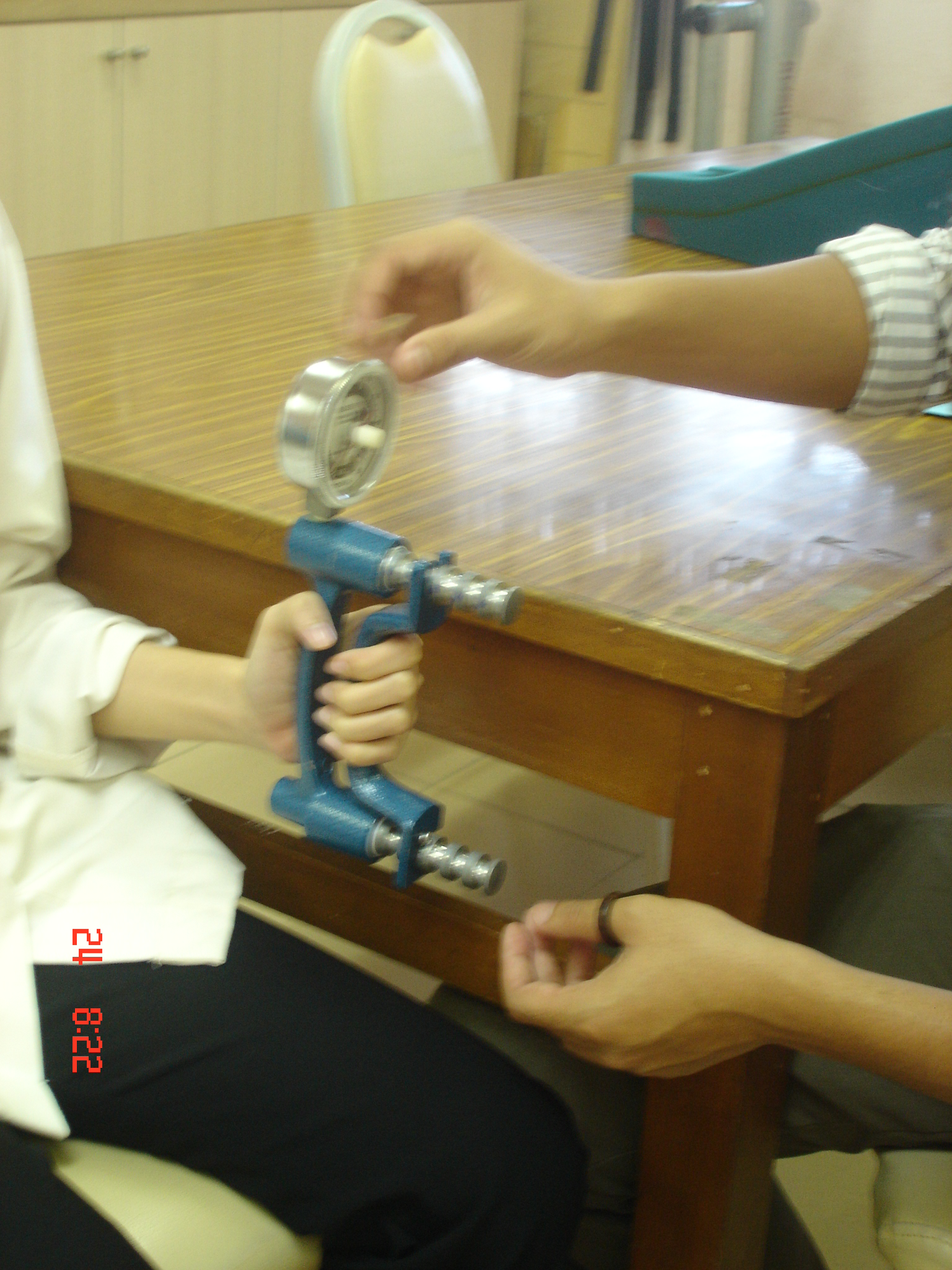 |
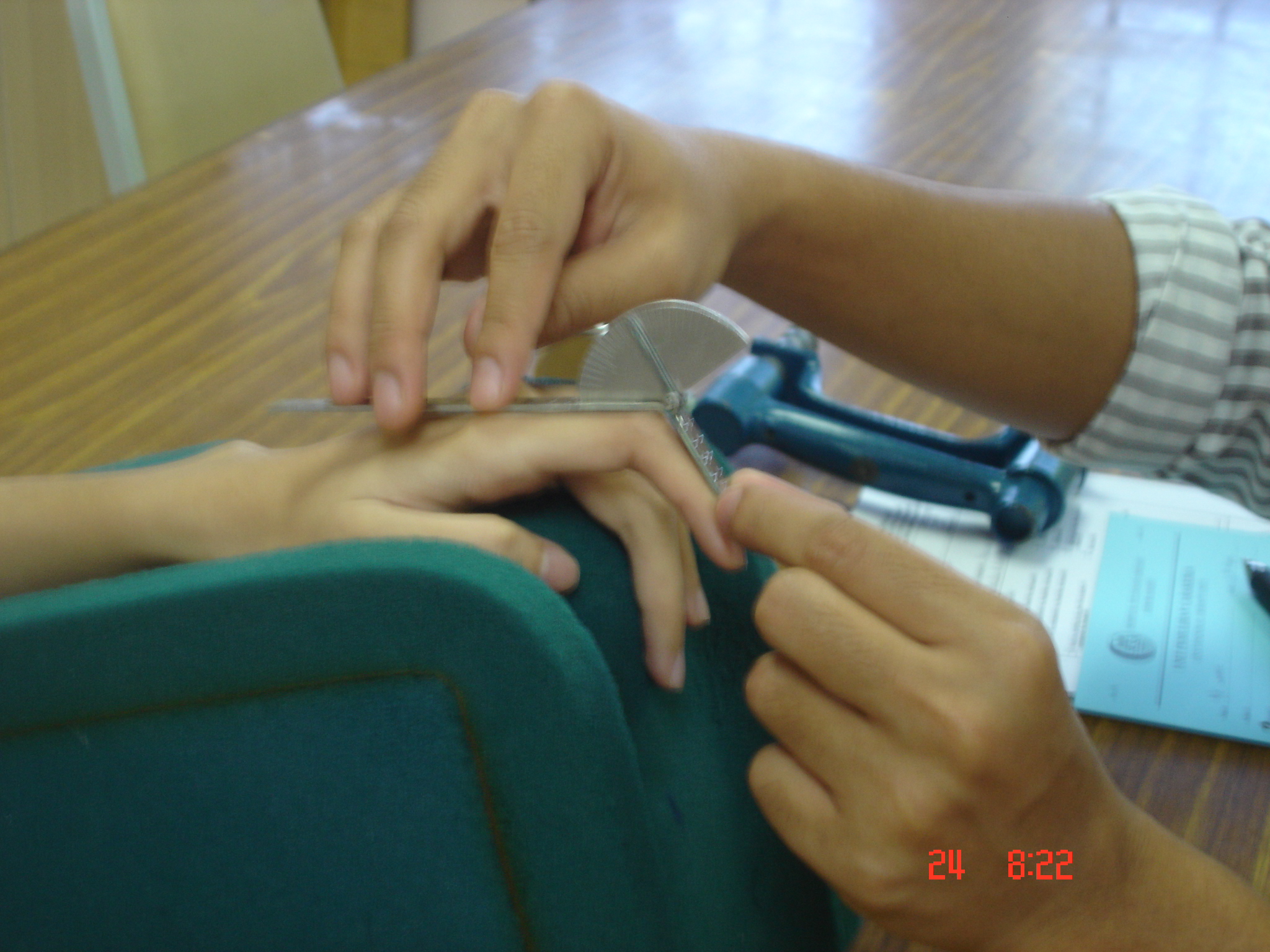 |
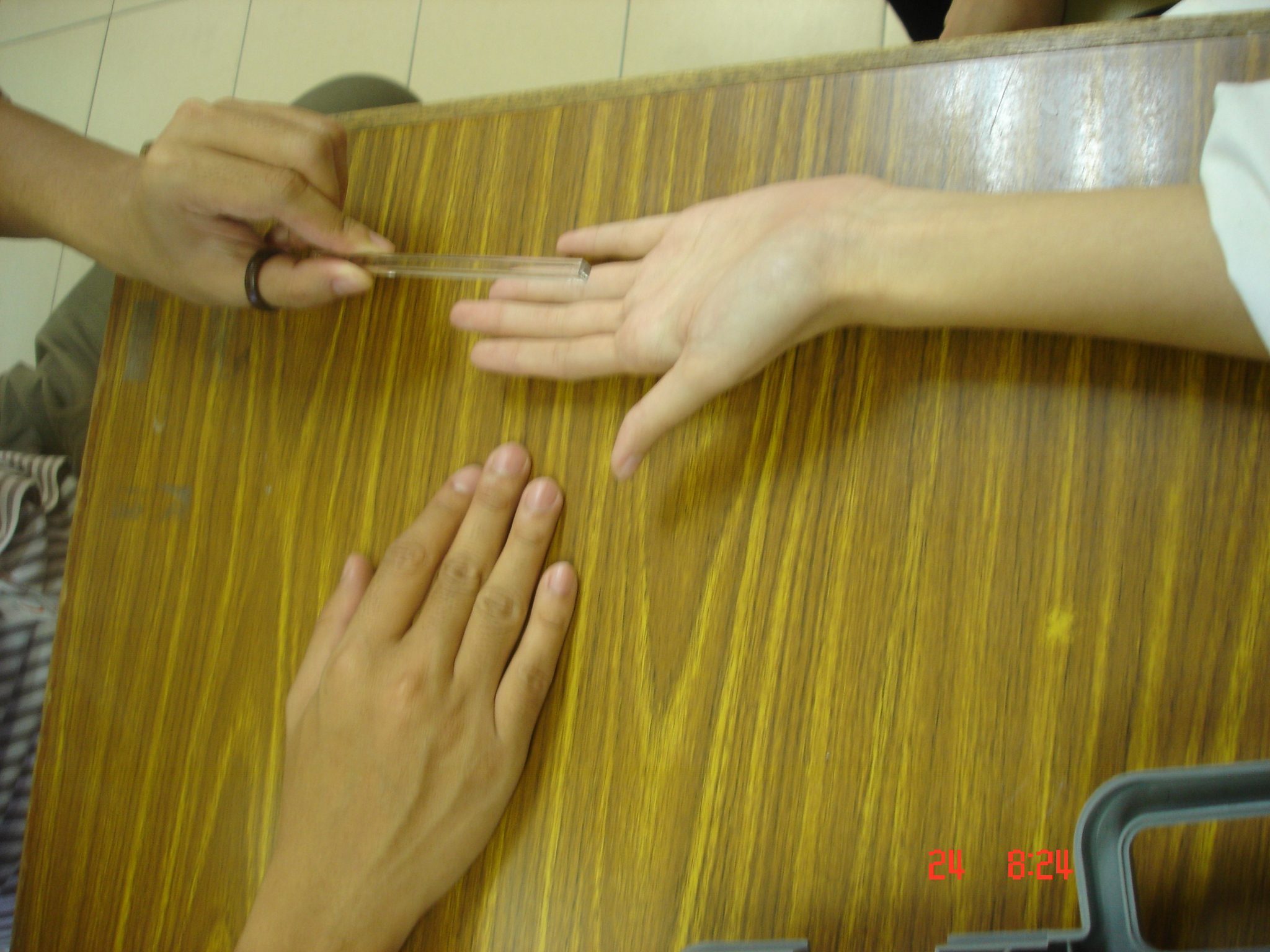 |
| Strength assessment | Range of motion assessment | Hand sensation assessment |
What is scar Assessment
Pigmentation, vascularity (color of the scar such as pink, red or purple), pliability (supple, yielding, firm or contracture), height, pain and itchiness. Abnormal scar usually felt itchy, painful, pink color and hypertrophic. Some of the abnormal scar were shown below:
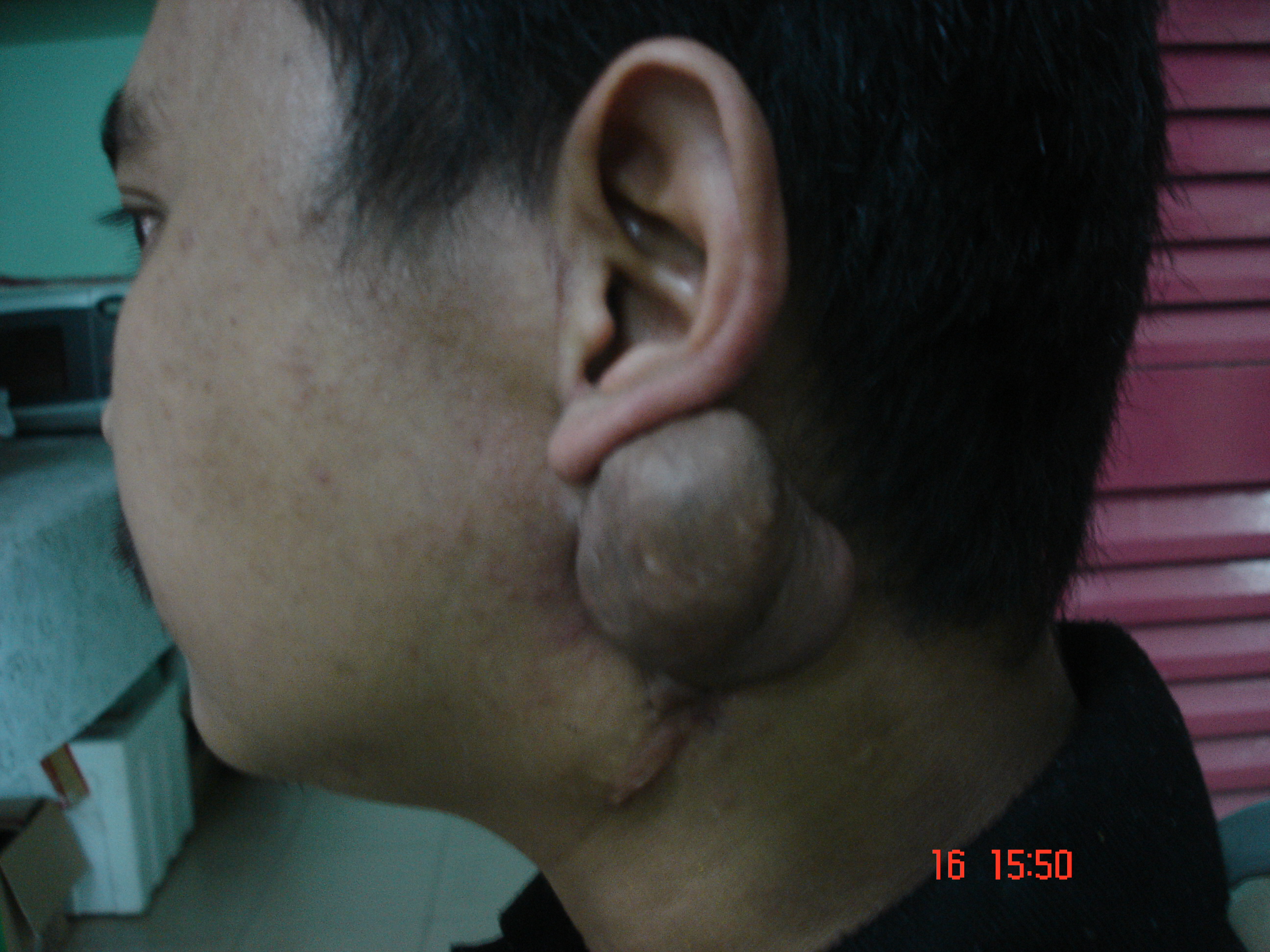 |
 |
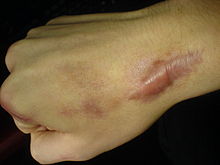 |
| Scar at ear | Scar at arm | Scar at hand |
What are the treatment recommendations for scar?
Deep massage of scar tissue
Using lotion increase pliability of tissue. It also lubricate dry scar tissue and skin grafts to prevent them from reopening and helps to break up bands of scar tissue that may form and cause tightness and restricted motion. Massage is several tools that may help to flatten hypertrophic scar and can be beneficial in reducing the sensitivity and pain of healed scar .Massage is not to be performed over open wound.
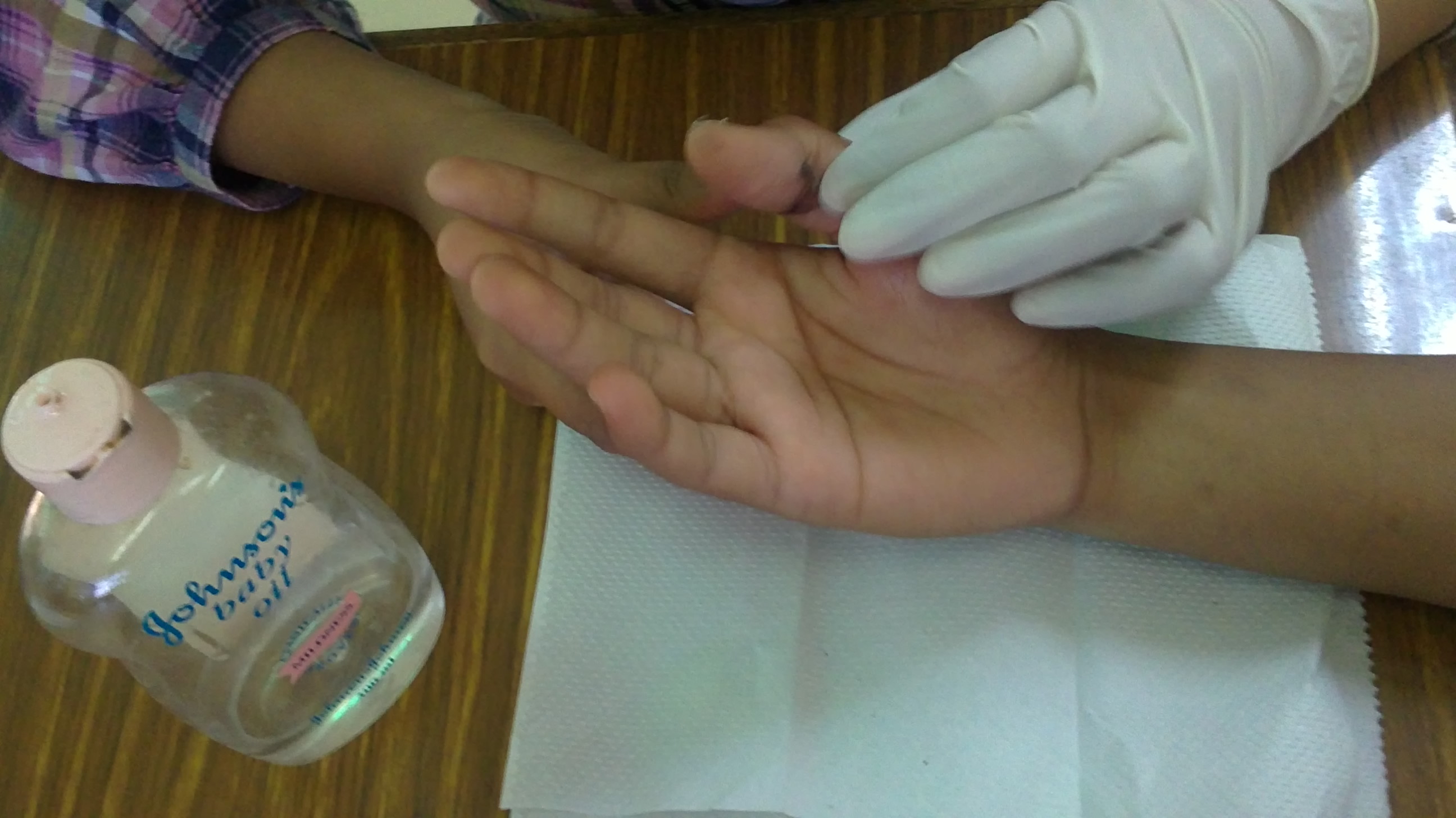 |
| Deep massage of scar tissue |
ROM or stretching exercise
This activity will aid in increasing movement that has been compromised by scar that cross joints. Scar tissue will lengthen after being stretched especially if the stretch is sustained for several seconds and combined with massage. The scar may try to contract or shorten again after a period of time following exercise. Therefore consistent, daily exercise essential to maximize ROM, increase function and prevent deformity. Some of exercise were shown below:
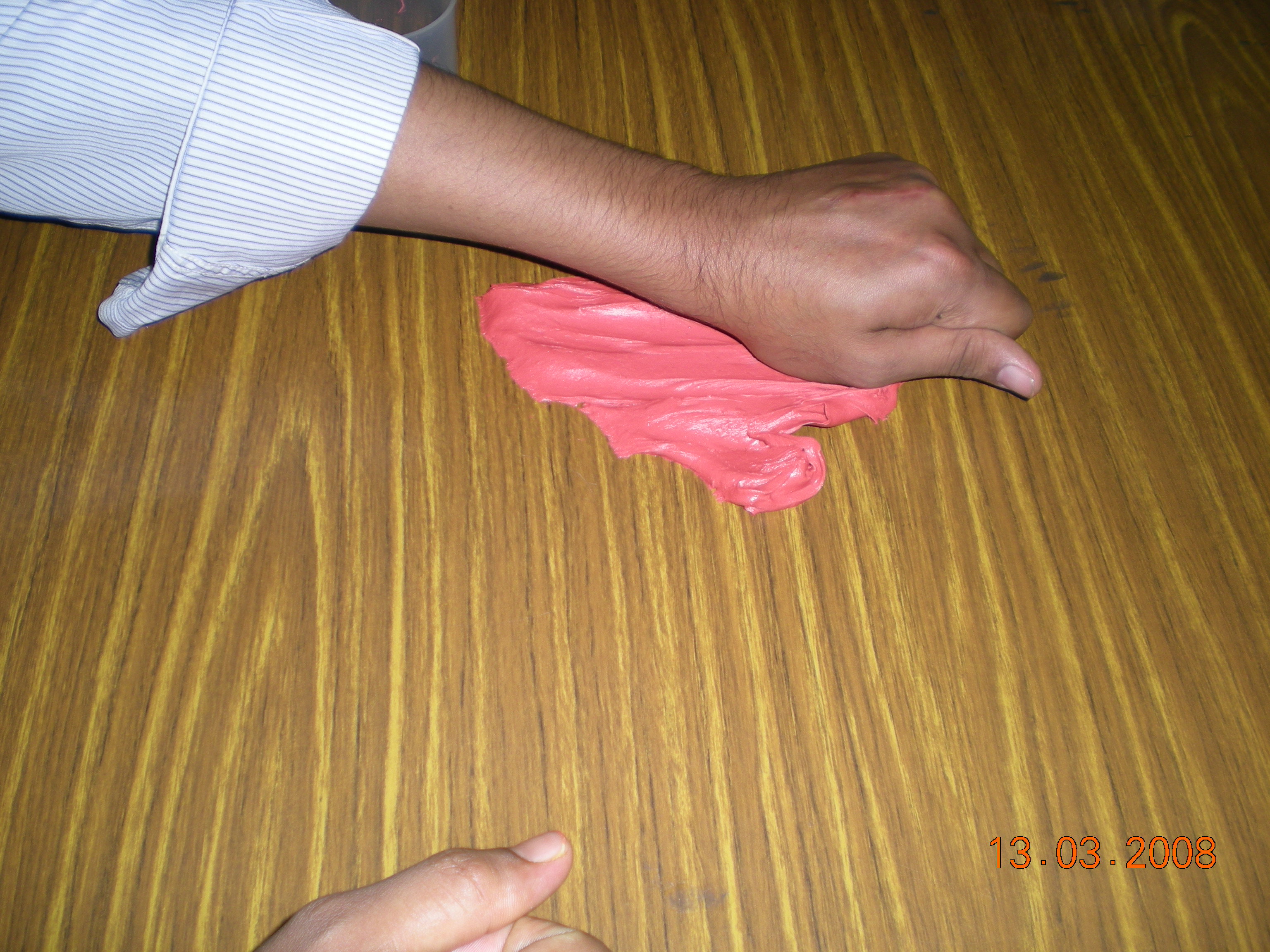 |
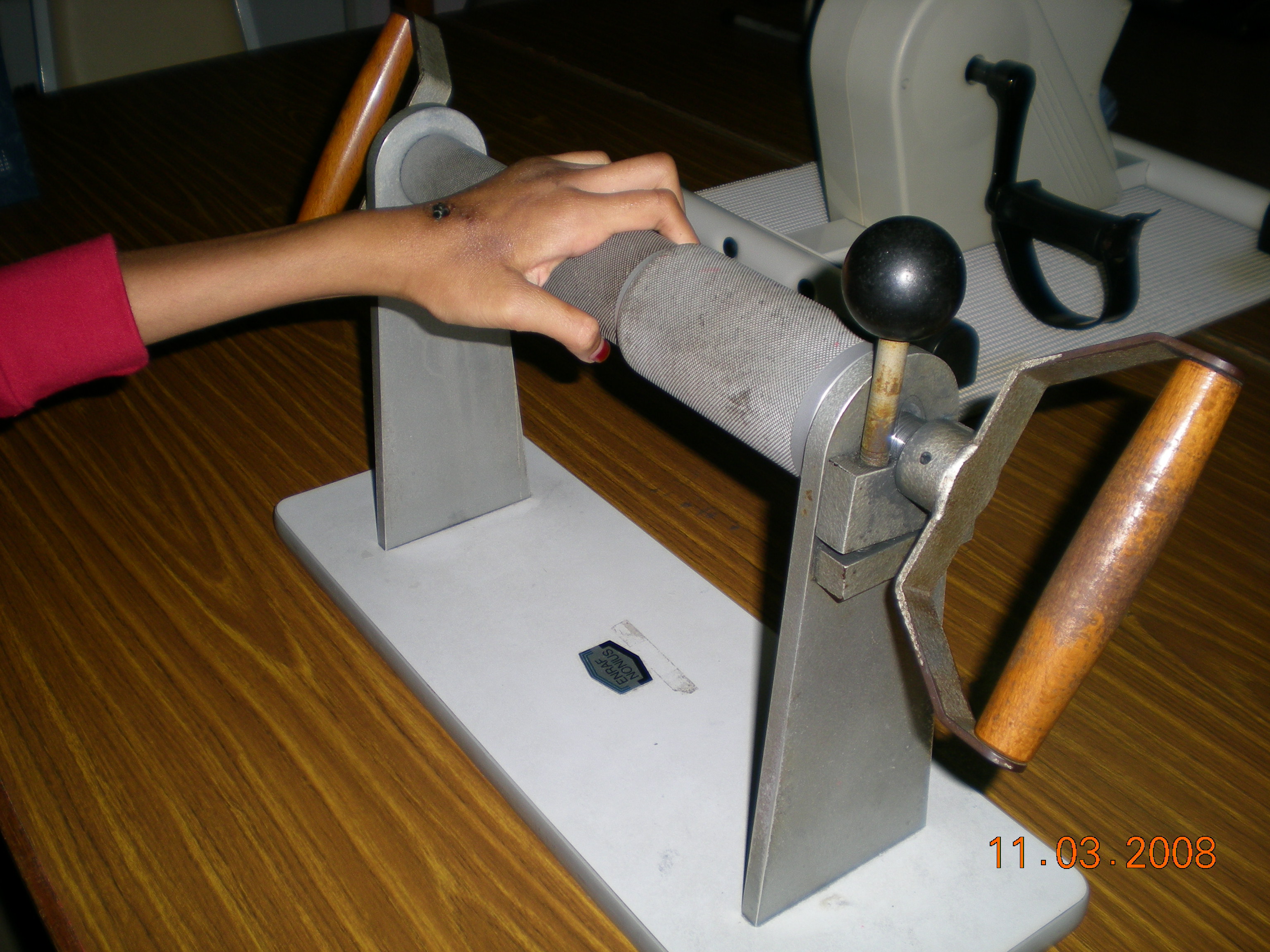 |
| Exercise using putty | Hand exercise using tool |
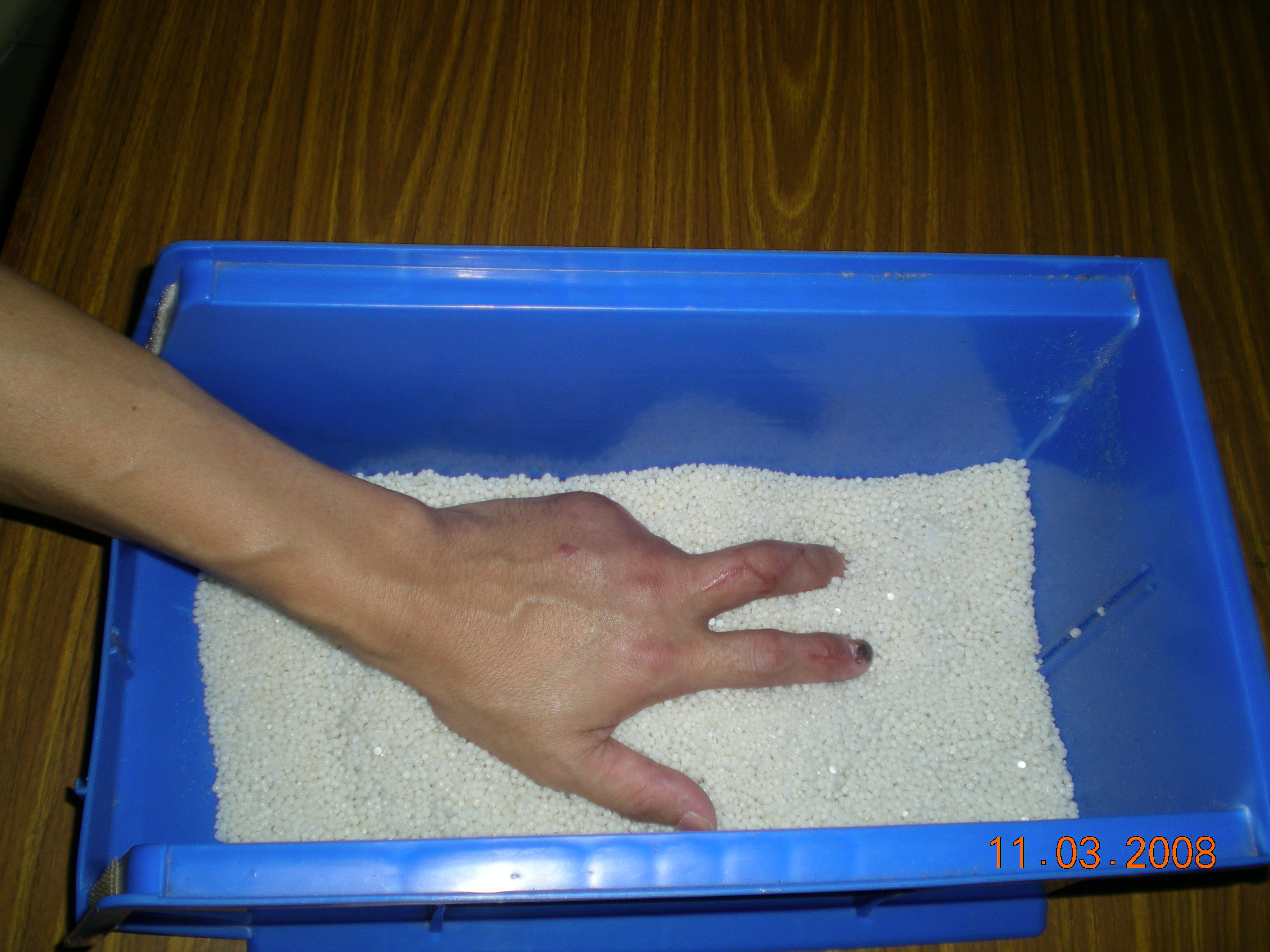 |
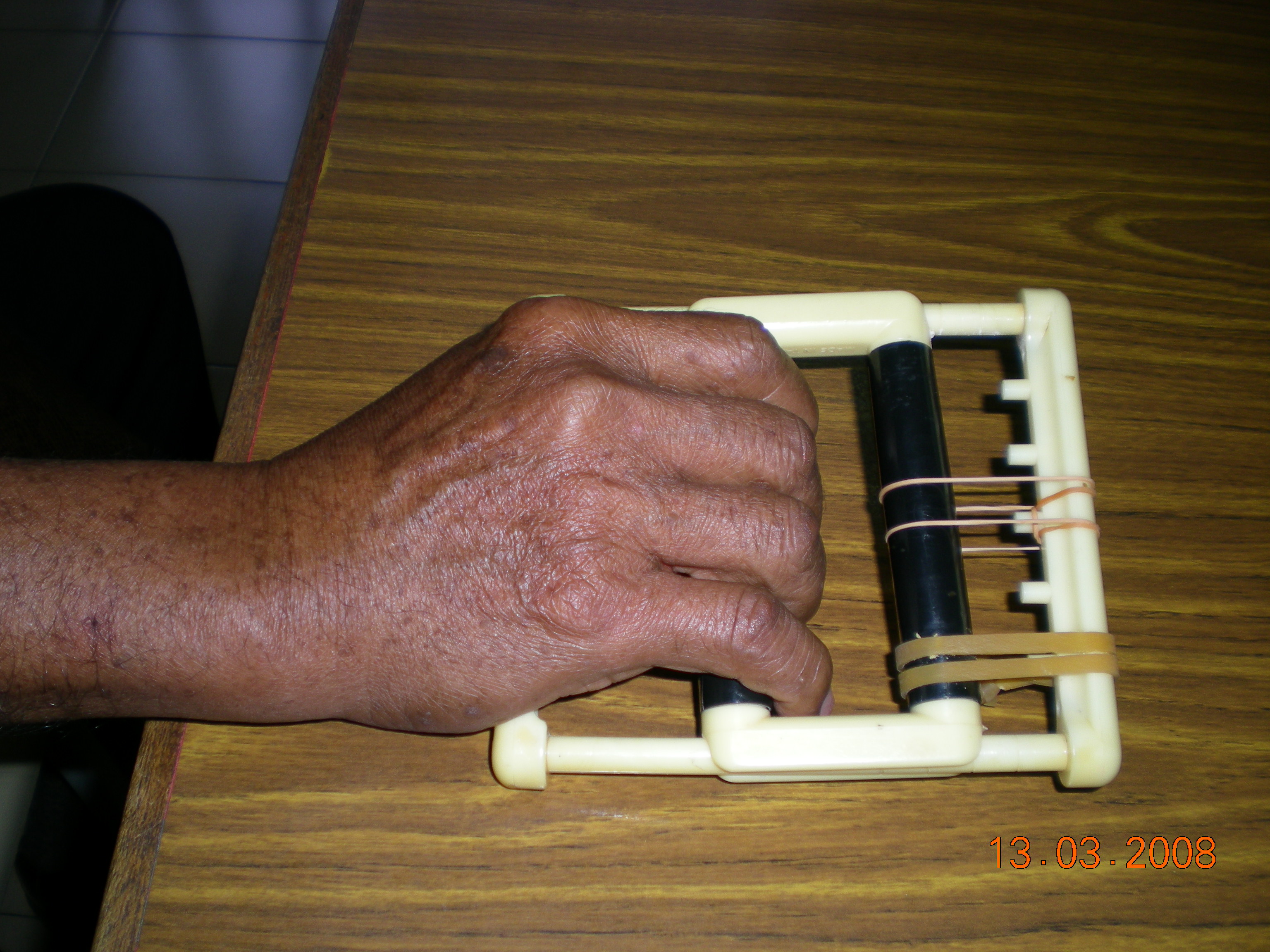 |
| Sensitization using beads | Exercise using putty |
The use of splinting
Splinting is made by plastic type material which can be mold according to shape via hot water. Splint will help to stretch scars that limit joint ROM or to prevent form shortening across joints and leading to deformity or compromised function. Splint stretch the scar tissue by placing constant tension. Splint may be used in combination with pressure for the dual effect of stretching and flattening scar tissues.
Splint care are :
- Follow therapist’s protocol
- Avoid splinting from heat resources – it will change the shape
- Prevent leaving the splint inside the car
- Clean splint using damp cloth. Prevent soaking in water
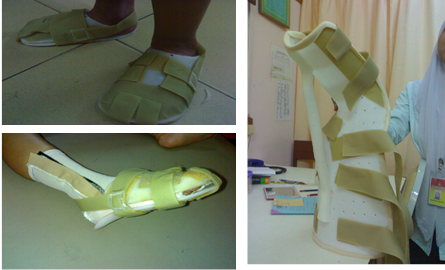 |
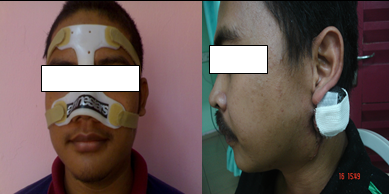 |
| Some example of the splinting at leg, nose and ear | |
Pressure Garment
Pressure garment were made from Lycra material. It will be sew by therapist according to the actual body size of the client. When a pressure is applied to an immature scar, it helps reduce hypertrophic scar formation and gives the tissue more natural flattened appearance. Pressure on immature scar also lengthen or stretches tight bands of scar tissue, aids in increasing ROM and improves the contour, appearance and pliability of the scar. Pressure can be applied by pressure garment. Pressure usually applied for 23 hours a day. Pressure application should continue until the scar becomes “mature”.
Care for pressure garment:
- Hand wash
- Use gentle soap. Prevent using detergent
- Dry under fan. Prevent direct sunlight
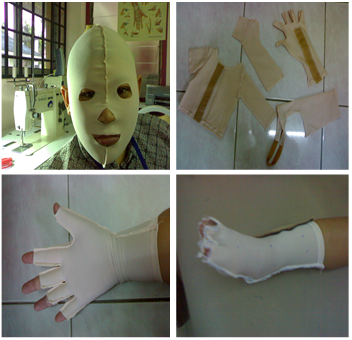 |
| Example of Pressure Garment for face, leg and others body part |
Using silicone
Applying heat to scar tissue also helps increase the pliability and flexibility of the scar especially when used prior to or during ROM exercise. This is achieved with paraffin wax, moist hot pack, and ultrasound.
 |
 |
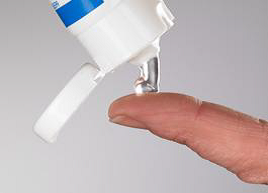 |
| Silicone sheets and silicone gel | ||
Apply Elasticated tubular bandage
Apply Elasticated tubular bandage if the wound still wet and its not suitable for pressure garment. Elasticated tubular bandage had lower pressure as compared with pressure garment. It will help the wound to heal and at the same time will reduce the scar.
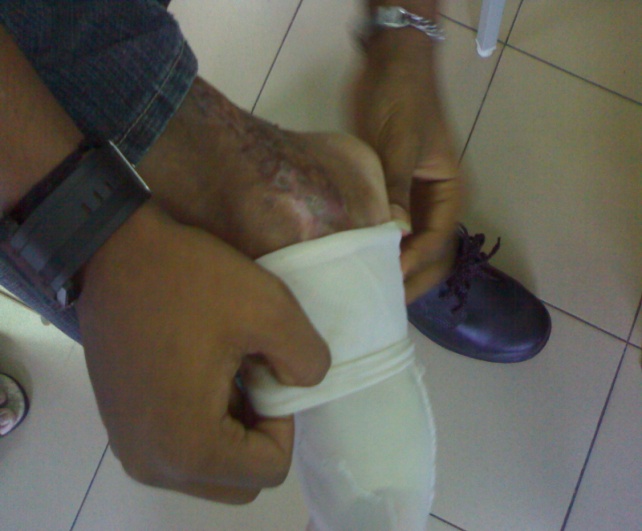 |
| Applying tubigrip for leg |
Use of aid
Aids and adaptation is needed especially when client unable to do gripping or had poor hand function to contracture of the skin/bone/joint. Aids and adaptation will be suggested by therapist according to client’s current problem and condition.
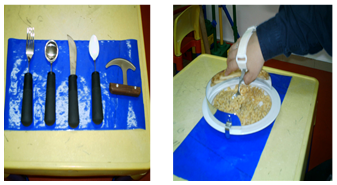 |
| Some example of Aids and Adaptation |
What to expect in the future?
The treatment of scar is unpredictable and often unsatisfactory. If a scar has arisen from an identifiable cause, such as ear piercing, then the patient should be strongly advised to avoid any form of body piercing again in the future. This preventative approach can extend to avoiding any unnecessary trauma to the skin (e.g., tattoos or elective cosmetic surgery). If surgery has caused scars in the past, patients should be informed that there is a high possibility of recurrence.
References
Burd A, Huang L. Hypertrophic response and keloid diathesis: two very different forms of scar. Plast Reconstrusct Surg. 2005; 116:150-157
| Last Reviewed | : | 28 August 2020 |
| Writer | : | Zurlina Binti Mahmood |
| Accreditor | : | Premalatha A/P Sundram |
| Reviewer | : | Tan Foo Lan |







